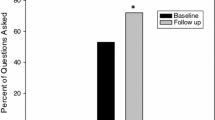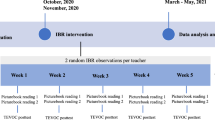Abstract
The New Word Hunter project sought to engage families of Year 1 children with the aim of extending their vocabularies beyond everyday language. Early vocabulary development has been linked to later performance in reading comprehension, as well as to socio-economic status. This project sought to recruit families from two diverse school communities as partners in encouraging their children to increase their lexical repertoires by providing them with vocabulary rich books, supplementary resources and advice. Utilising a pre-and post-test design with a treatment group and comparison group in each of two contrastive schools, the study investigated both receptive and expressive vocabulary performance, with a focus on words in the Tier-2 category, drawing on the work of Beck and McKeown. Initial assessment found unanticipated similarities in the performance of children from low and middle SES backgrounds, but differences related to language background and gender. Based on this assessment, we suggest that educators may be underestimating young children’s receptive and expressive language competence. Findings of the comparative analysis of pre- and post-test results indicate that the intervention was effective in improving children’s understanding of challenging words included in fictional and nonfiction texts provided in resource packs. However, this was only the case in one school, Pleasant Rise, which had a socially and culturally diverse community with a moderate level of disadvantage; it was not the case in Pelican Point, a school serving a highly disadvantaged community. In discussing the findings, we suggest there may be an interaction between teacher attitudes, family interventions and child outcomes, even when educators’ pedagogy is not the focus of the interventions. Acknowledging limitations of the project, we propose that directly encouraging parents and carers to engage in vocabulary extension with their children, and providing high quality and engaging materials, is worth further attention.
Similar content being viewed by others
References
Adelson, J., Dickinson, E.R. & Cunningham, B. (2016). A multigrade, multiyear statewide examination of reading achievement: Examining variability between districts, schools and students. Educational Researcher, 45 (4), 258–262.
Bailey, M., Harrison, C. & Brooks, G. (2002). The Boots Books for Babies project: Impact on library registrations and book loans. Journal of Early Childhood Literacy, 2 (1), 45–63.
Beck, I. & McKeown, M. (1985). Teaching vocabulary: Making the instruction fit the goal. Educational Perspectives, 11–15.
Beck, I.L. & McKeown, M.G. (2007). Increasing young low-income children’s oral vocabulary repertoires through rich and focused instruction. The Elementary School Journal, 107(3), 251–271.
Beck, I., McKeown, M. & Kucan, L. (2013). Bringing words to life: Robust vocabulary instruction. New York & London: The Guildford Press.
Biemiller, A. (2003). Vocabulary: Needed if more children are to read well. Reading Psychology, 24(3-4), 323–335.
Bingham, G.E., Jeon, H.J., Kwon, K.A. & Lim, C. (2016). Parenting styles and home literacy opportunities: Associations with children’s oral language skills. Infant and Child Development, 26 (5), 1–18.
Bloom, L. (1974). Talking, understanding and thinking: Developmental relationship between receptive and expressive language. In R. Schiefelbusch & L. Lloyd (Eds.), Language perspectives: Acquisition, retardation, and intervention. Baltimore MD: University Park Press.
Bonifacci, P., Barbieri, M. & Tomassini, M. (2018). In few words: Linguistic gap but adequate narrative structure in preschool bilingual children. Journal of Child Language, 45, 120–147.
Bornstein, M., Haynes, M. & Painter, K.M. (1998). Sources of child vocabulary competence: A multivariate model. Journal of Child Language, 25, 367–393.
Daly, A. (2015). Relating students’ spoken language and reading comprehension. Australian Journal of Language and Literacy, 38 (3), 193–204.
D’Agostino, J. & Rodgers, E. (2017). Literacy achievement trends at entry to first grade. Educational Researcher, 46 (2), 78–89. doi:10.3102/0013189X17697274
Damhuis, R. & Van Der Zalm, E. (2017). A provocative approach for communication with low-proficient children: Examining how the interactive role of teachers and children changes. Language and Literacy, 19 (2), 51–71.
Dickinson, D.K. & Porche, M.V. (2011). Relation between language experiences in preschool classrooms and children’s kindergarten and fourth-grade language and reading abilities. Child Development, 82 (3), 870–886.
Dunn, L. & Dunn, M. (2007). Peabody picture vocabulary test. (4th ed.). Minneapolis, MN: Pearson.
Graves, M. Elmore, J. & Fitzgerald, J. (2019). The vocabulary of core reading programs, The Elementary School Journal, 119, 386–416.
Hall, C. & Jones, S. (2016). Making sense in the city: Dolly Parton, early reading and educational policy-making. Literacy, 50(1), 40–48.
Hart, B. & Risley, T. (2003). The early catastrophe: The 30 million word gap by age 3. American Educator, Spring, 4–9.
Hill, S. & Launder, N. (2010). Oral language and beginning to read. Australian Journal of Language & Literacy, 33 (3), 240–254.
Justice, L.M., Meier, J. & Walpole, S. (2005). Learning new words from storybooks: An efficacy study with at-risk kindergartners. Language, Speech and Hearing Services in Schools, 36, 17–32.
Kelly, E.S., Goldstein, H., Spencer, T. & Sherman, A. (2015). Effects of automated Tier 2 storybook intervention on vocabulary and comprehension learning in preschool children with limited oral language skills. Early Childhood Research Quarterly, 31, 47–61.
Lawhon, T. & Cobb, J.B. (2002). Routines that build emergent literacy skills in infants, toddlers, and preschoolers. Early Childhood Education Journal, 30 (2), 113–118.
Lee, J.S. & Bowen, N.K. (2006). Parent involvement, cultural capital and the achievement gap among elementary school children. American Educational Research Journal, 43 (2), 193–218.
Manz, P.H., Eisenberg, R., Gernhart, A., Faison, J., Laracy, S., Ridgard, T. & Pinho, T. (2017). Engaging Early Head Start parents in a collaborative inquiry: The co-construction of Little Talks. Early Child Development and Care, 187(8), 1311–1334.
Massaro, D. (2015). Two different communication genres and implications for vocabulary development and learning to read. Journal of Literacy Research, 47 (4), 505–527.
McDowall, S. & Boyd, S. (2005). Messages about reading: What do parents and teachers hear, share, do and need when engaging in literacy partnerships? Wellington: New Zealand Council for Educational Research.
McKeown, M.G. & Beck, I.L. (2014). Effects of vocabulary instruction on measures of language processing: Comparing two approaches. Early Childhood Research Quarterly, 29, 520–530.
Mesmer, H. (2015). Text matters: Exploring the lexical reservoirs of books in preschool rooms. Early Childhood Research Quarterly, 34 (1), 67–77.
Nation, K., Clarke, P., Marshall, C.M. & Durand, M. (2004). Hidden language impairments in children: Parallels between poor reading comprehension and specific language impairment? Journal of Speech, Language, and Hearing Research, 47, 199–211.
Neuman, S.B. & Dwyer, J. (2009). Missing in action: Vocabulary instruction in Pre-K. The Reading Teacher, 62 (5), 384–392.
Neuman, S.B., Kaefer, T. & Pinkham, A.M. (2018). A double dose of disadvantage: Language experiences for low-income children in home and school. Journal of Educational Psychology, 110 (1), 102–118.
Niklas, F. & Schneider, W. (2015). With a little help: Improving kindergarten children’s vocabulary by enhancing the home literacy environment. Reading and Writing, 28, 491–508.
Park, H. (2008). Home literacy environments and children’s reading performance: A comparative study of 25 countries. Educational Research and Evaluation: An International Journal on Theory and Practice, 14 (6), 489–505.
Paris, S. (2005). Reinterpreting the development of reading skills. Reading Research Quarterly, 40 (2), 184–202.
Pearson, P.D., Hiebert, E.H. & Kamil, M.L. (2007). Vocabulary assessment: What we know and what we need to learn. Reading Research Quarterly, 42 (2), 282–296.
Riley, J. & Burrell, A. (2007). Assessing children’s oral storytelling in their first year of school. International Journal of Early Years Education, 15 (2), 181–196.
Schaughency, E., Suggate, S. & Reese, E. (2017). Links between early oral narrative and decoding skills and later reading in a New Zealand sample. Australian Journal of Learning Difficulties, 22 (2), 109–132.
Senechal, M. (1997). The differential effect of storybook reading on preschoolers’ acquisition of expressive and receptive vocabulary. Journal of Child Language, 24, 123–138.
Snow, C. & Matthews, T. (2016). Reading and language in the early grades, The Future of Children, 26 (1), 57–74.
Stahl, S.A. (2003). Vocabulary and readability: How knowing word meanings affects comprehension Topics in Language Disorders, 23 (3), 241–247.
Thwaite, A. & McKay, G. (2013). Five-year-olds doing science and technology: How teachers shape the conversation. Australian Journal of Language & Literacy, 36 (1), 28–37.
Wasik, B.A. & Iannone-Campbell, C. (2013). Developing vocabulary through purposeful, strategic conversations. The Reading Teacher, 66 (4), 321–332.
Wesseling, P., Christmann, C. & Lachmann, T. (2017). Shared book reading promotes not only language development, but also grapheme awareness in German kindergarten children. Frontiers in Psychology, 8, 1–13.
Westgate, D. & Hughes, M. (2018). Mind the gap: Vocabulary development in the primary curriculum. Education 3-13, 46(5), 587–598.
Westerveld, M.F. & Moran, C.A. (2011). Expository language skills of young school-age children. Language, Speech and Hearing Services in Schools, 42, 182–193.
Author information
Authors and Affiliations
Rights and permissions
About this article
Cite this article
Nichols, S., Hill, S. New Word Hunters: A family engagement strategy to extend Year 1 children’s vocabulary. AJLL 43, 129–140 (2020). https://doi.org/10.1007/BF03652049
Published:
Issue Date:
DOI: https://doi.org/10.1007/BF03652049




